Today, we are delving into the fascinating world of tarot card drawings. Whether you are a seasoned tarot enthusiast or a curious beginner, we invite you to join us as we explore the rich history, symbolism , and artistic allure of tarot art. Tarot card drawings have captivated people for centuries, offering a glimpse into the mystical and the unknown.
Did you know that the iconic imagery found in tarot cards has evolved and adapted over time, reflecting cultural influences and artistic trends? Join us as we unravel the artistic mystique of tarot card drawings and uncover the timeless allure that continues to captivate people around the world.
The facts at a glance
- The history and evolution of tarot art spans centuries and cultures, reflecting human experience and artistic expression. The Major Arcana and Minor Arcana cards convey emotions and themes through symbolism and color, shaped by cultural influences and artistic styles.
- Understanding the symbolism in tarot card drawings involves interpreting the iconography of Major Arcana symbols, deciphering symbols in Minor Arcana, and recognizing the meaning of colors, which play a crucial role in tarot card readings.
- Creating tarot art involves choosing the right artistic medium, incorporating personal symbolism, and immersing oneself in nature, mythology, folklore, and cultural traditions for inspiration. The world of tarot art encompasses classic and modern designs, diverse cultural influences, and themed decks with captivating artwork.
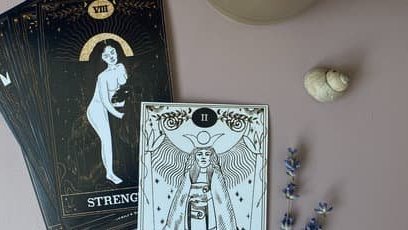
1/9 History and Evolution of Tarot Art
Origins of Tarot Imagery
The history of tarot imagery is a fascinating journey that spans centuries and cultures, from ancient Egypt to the Renaissance. The symbolic evolution of tarot cards reflects the rich tapestry of human experience and artistic expression throughout history.
If you’re interested in exploring the connection between tarot and artistic expression, check out our article on “Tarot Art” for some fascinating insights and inspiration.

Major Arcana’s Artistic Journey
Embarking on the Artistic Journey of the Major Arcana leads us to explore the evolution of artistic styles in iconic tarot cards. Each card is filled with symbolism and imagery, reflecting deep themes influenced by cultural art movements. This makes the Major Arcana a timeless source of artistic inspiration and spiritual insight.
Minor Arcana’s Symbolic Illustrations
The imagery and symbolism found in the Minor Arcana of tarot cards convey emotions and themes through the use of colors that have evolved over time. The artistic styles and cultural influences have shaped the symbolism of the cards, adding depth and complexity to their interpretations . Understanding color symbolism and cultural influences can provide valuable insights into the deeper meanings of these captivating tarot cards.
If you’re interested in learning more about tarot card drawing, check out our article on the topic here for some in-depth insights and guidance.
2/9 Understanding the Symbolism in Tarot Card Drawings
Exploring the Rich History and Diverse Artistry of Tarot Card Drawings
- The history of tarot card art dates back to the 15th century, with the first known deck originating in Italy.
- Each tarot card is rich in symbolism, with imagery that draws from various cultural, spiritual, and artistic influences.
- Some of the most famous tarot artists include Pamela Colman Smith, whose illustrations for the Rider-Waite-Smith deck have become iconic in the tarot world.
- Modern tarot art has expanded to include digital illustrations, creating a new wave of creativity and accessibility for tarot enthusiasts.
- Collecting tarot art has become a popular hobby, with many enthusiasts seeking out rare and limited edition decks to add to their collections.
Interpreting Iconography in Major Arcana
Diving into the Meaning of Major Arcana Symbols The symbols in the Major Arcana hold deep historical and cultural significance that goes beyond their visual representation. They offer profound insight into universal truths and the human experience. Understanding the cultural influences on Major Arcana symbolism reveals the interconnectedness of different traditions and beliefs.
This symbolic language speaks to our collective unconscious, providing guidance and wisdom to those who seek it. Uncovering the complex web of Major Arcana iconography is a journey of discovery, enlightenment, and cultural appreciation. Each symbol encourages us to delve into our own consciousness and the shared heritage of humanity.
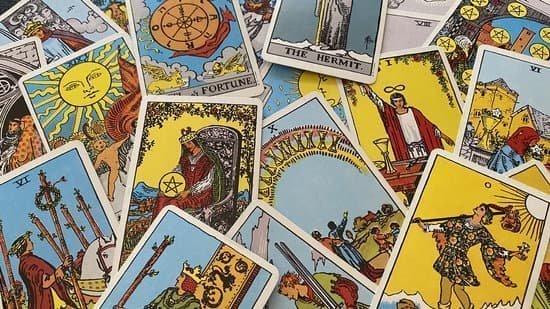
Deciphering Symbols in Minor Arcana
The world of Minor Arcana tarot cards is a captivating tapestry of hidden meanings and cultural evolution . The artistic styles and symbolism of these cards reflect the evolution of tarot art. Exploring the hidden meanings behind specific symbols deepens our understanding of their impact on tarot symbolism.
The evolution of artistic styles has shaped the symbolism of the Minor Arcana, adding complexity to their interpretation . Analyzing the impact of artistic styles on Minor Arcana symbolism reveals the connections between art, culture, and the timeless allure of tarot drawings. Each symbol weaves together tradition and innovation to create a captivating tapestry of meaning.
If you’re interested in diving deeper into the meanings behind tarot card symbols, check out our article on “Tarot Card Symbols” for a comprehensive guide.
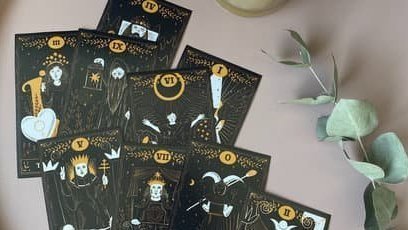
Color Use and Its Meaning in Tarot
Color plays a crucial role in tarot card readings, influencing our emotions and thoughts. Every color has its own meaning and can reveal hidden truths about ourselves. Whether it’s the fiery passion of red or the serene calmness of blue, paying attention to these colors can add depth to your tarot experience.
Next time you pull a card, take a moment to consider the colors – they could hold the answers you seek.
If you’re interested in learning more about the fascinating world of tarot card art, check out our article on “Tarot Card Art” for a deeper dive into this unique and mystical form of visual storytelling.
3/9 The Creative Process Behind Tarot Card Illustrations
Step-by-Step Guide to Creating Your Own Tarot Art
Getting started with tarot art requires choosing the perfect artistic medium. Whether it’s traditional painting, digital design, or mixed media, the options are limitless. Adding personal symbolism to your illustrations can make them stand out.
Consistency in style, color scheme, and symbolism is crucial for a visually appealing tarot deck. But most importantly, let your creativity shine and have fun bringing your tarot art to life.
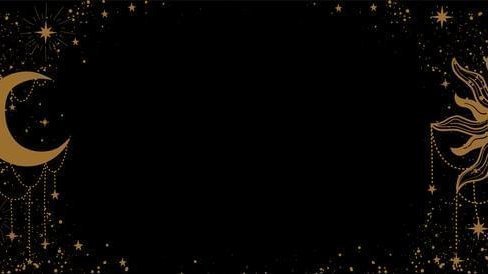
How to Conduct Meaningful Tarot Card Drawings at Home
- Choose a tarot deck that resonates with you and reflects your personal style and interests.
- Find a quiet and comfortable space to conduct your tarot readings, free from distractions and interruptions.
- Shuffle the cards with intention and focus, asking the universe or your higher self for guidance and clarity.
Inspiration Sources for Tarot Artists
Immersing yourself in nature , mythology , folklore , and cultural traditions is crucial for creating tarot decks that are both captivating and unique. By incorporating these elements, you can add depth, meaning, and beauty to your cards, making them resonate with a wide audience.
Materials and Tools for Aspiring Tarot Illustrators
Selecting the appropriate materials and tools is essential in crafting top-notch tarot illustrations. Opt for high-grade, acid-free paper and canvas to maintain the vibrancy and durability of your art. Explore digital tools for added creativity and mixed media techniques for a distinctive touch.
Embrace experimentation to discover what suits your unique style and creative journey.
If you want to learn more about different tarot decks, check out our article on choosing the right tarot deck for you.

4/9 Popular Styles and Themes in Tarot Card Art
Classic vs. Modern Tarot Designs
The art of tarot combines ancient symbolism with modern design, creating visually stunning and captivating decks that appeal to a global audience.
If you’re interested in learning more about tarot cards and their meanings, check out our article on “Tarot Cards with Meanings on Them” for a comprehensive guide.
Cultural Influences in Tarot Imagery
The history of tarot card imagery has been molded by various cultural influences. Modern tarot designs have been enriched by globalization , bringing diverse perspectives and expanding the symbolism and storytelling within the cards to create a global and inclusive experience for enthusiasts.
In this video, artists showcase their personalized tarot card drawings, offering a unique and creative perspective on this mystical tradition. Explore the intricate designs and interpretations in the video.
Thematic Tarot Decks and Their Unique Art
Dive into the enchanting world of themed tarot decks and their captivating artwork. Each deck tells its own mesmerizing story through unique themes and motifs, from mythical creatures to ancient folklore. The use of symbolism adds depth, inviting you to unravel hidden meanings.
Whether you’re drawn to fantasy themes or historical motifs, themed tarot art offers a diverse and enchanting visual storytelling experience.
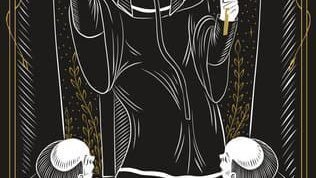
5/9 Spotlight on Renowned Tarot Artists and Their Work
Iconic Historical Tarot Artists
The tarot art world is brimming with influential figures who have left a lasting mark. Historical events have shaped these legendary artists, influencing the evolution of tarot art. Their visionary creations capture the spirit of their era and motivate modern artists to push boundaries.
Their impact continues to inspire art enthusiasts across the globe.
Contemporary Tarot Art Masters
The world of tarot art is constantly changing and evolving , with artists embracing digital techniques to create visually striking decks. This has allowed for a wider range of cultural themes to be explored, breathing new life into the practice and captivating audiences.
Emerging Talent in the Tarot Art Scene
The realm of tarot art is in a constant state of evolution , as emerging artists introduce new perspectives and innovative methods. These rising talents are revitalizing the traditional art form and injecting new energy into tarot card readings. It’s worth keeping an eye on these young artists, as they are poised to influence the future of tarot art with their unique creativity and vision.
If you’re interested in learning more about the fascinating world of Leonora Carrington’s tarot, check out our article on Leonora Carrington Tarot for an in-depth exploration of her mystical artwork and its interpretation.

6/9 Collecting and Appreciating Tarot Card Art
Starting Your Own Tarot Art Collection
Are you eager to begin your own collection of tarot art? Hunting for unique and old decks is an adventure in itself. Building connections with fellow collectors can offer helpful tips and knowledge.
After finding the ideal decks , keeping them organized is crucial for easy enjoyment. Are you prepared to explore the world of tarot art collecting ?
Displaying and Caring for Tarot Decks
To keep your tarot cards vibrant and ready for meaningful readings, store them in a cool, dry place away from sunlight and extreme temperatures. Using protective cases and displaying them as art adds mystique and helps you connect with them visually, honoring their significance.
Investing in Limited Edition Tarot Art
Embracing the World of Limited Edition Tarot Art The world of limited edition tarot art holds a special allure for collectors and art enthusiasts alike. These rare and exclusive pieces offer not only enjoyment, but also the potential for financial growth. Whether for personal pleasure or investment, investing in limited edition tarot art allows you to own a piece of history and potentially secure a valuable asset for the future.
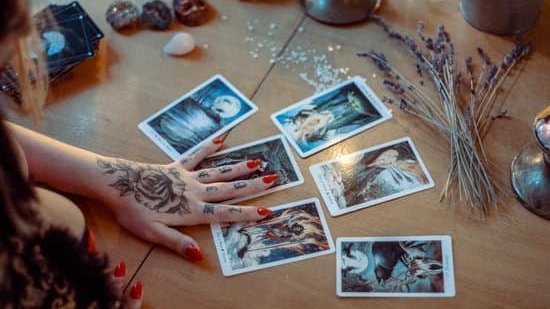
Comparison of Classic and Modern Tarot Designs Tabelle
| Category | Classic Tarot Designs | Modern Tarot Designs |
|---|---|---|
| Origin | Rooted in historical background and traditional symbolism | Derived from contemporary inspiration and reinterpretation |
| Artistic Style | Detailed illustrations with a vintage aesthetic | Varied styles including abstract, minimalist, and digital artwork |
| Influence | Cultural and historical significance influencing interpretations | Pop culture, modern symbolism, and personal interpretation shaping meanings |
7/9 Digital Tarot Art and Online Presence
Navigating Tarot Art in the Digital Age
In the modern age of technology , social media has made tarot art more accessible than ever before. Artists can now share their work with a global audience on platforms like Instagram and Pinterest, connecting tarot enthusiasts with creators and fostering a sense of community among tarot lovers worldwide.
Online Communities for Tarot Artists and Enthusiasts
Participating in online tarot communities offers valuable opportunities for both seasoned creators and newcomers. Engage with others, get constructive criticism, and cultivate your tarot art skills. These platforms allow you to showcase your love for the art and be part of a thriving tarot art community .
8/9 Conclusion: The Timeless Allure of Tarot Drawings
The art of tarot has a timeless appeal and a strong influence on fashion. The symbolic images and mystical themes often appear on clothing, accessories, and runway designs. Tarot readings provide guidance, self-reflection, and personal insight, impacting the human psyche.
The art also plays a significant role in contemporary spiritual practices, offering valuable tools for meditation and spiritual growth. Tarot continues to captivate artists, fashion designers, and spiritual seekers, making it a versatile and influential art form.

9/9 Conclusion
In conclusion, the timeless allure of tarot drawings continues to captivate and inspire artists and enthusiasts alike. We have delved into the history, symbolism , creative process, popular styles, and renowned artists in the world of tarot art. We hope that this article has provided valuable insights and inspiration for our readers in understanding and appreciating the artistic mystique of tarot card drawings.
For more in-depth explorations of related topics, we invite you to explore our other articles on art, symbolism, and creative expression. Thank you for joining us on this journey through the fascinating world of tarot art.
FAQ
Can you design your own tarot cards?
Sure thing! Making your own tarot deck is a fulfilling and artistic endeavor, especially for beginners. First, you can explore the traditional meanings and symbols of tarot cards to understand their framework. After that, you can unleash your creativity by choosing themes, creating artwork, and incorporating symbolism for each card.
How many tarot cards are you supposed to draw?
A good way for beginners to begin practicing Tarot spreads is by using a simple three or five-card spread. These spreads are often used to gain clarity on topics such as work, love, or spiritual purpose. The number of cards drawn determines the level of insight provided. If you’re looking to expand your practice, you can also consider incorporating elemental associations and reversals into your readings.
What is the style of tarot card illustration?
Tarot card art typically features a woodblock printing art style. Additionally, many tarot card designs incorporate intricate patterns and symbolic imagery.
How do you lay out tarot cards?
If you want to give it a try, here’s how: First, place card one in the center to represent the current situation. Then, lay card two horizontally on top of the first card. Next, place card three above card one. Finally, put card four below card one to represent the future of the situation. Give it a go and see what insights you uncover!


